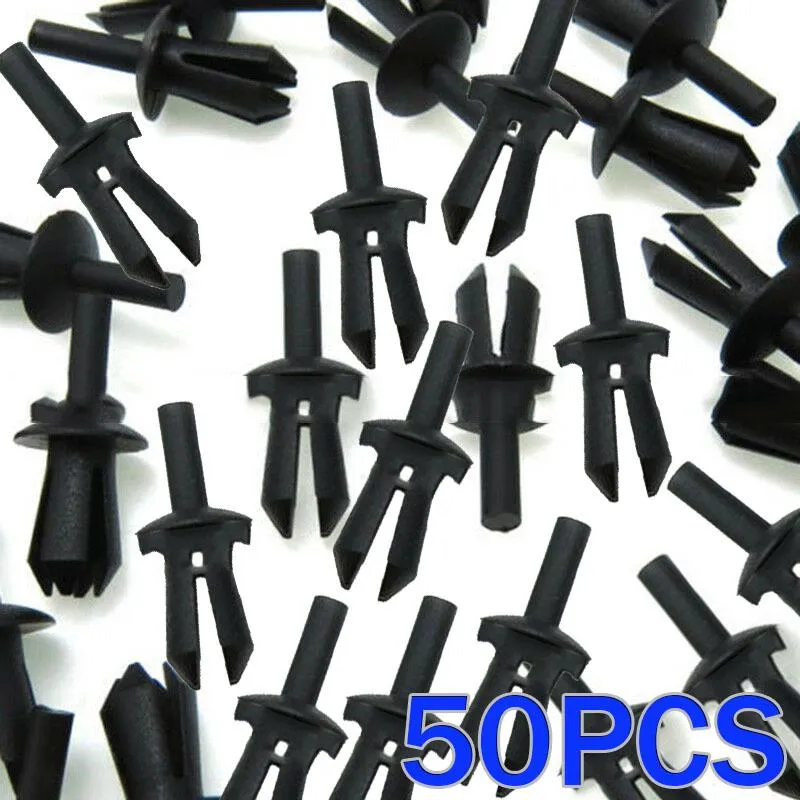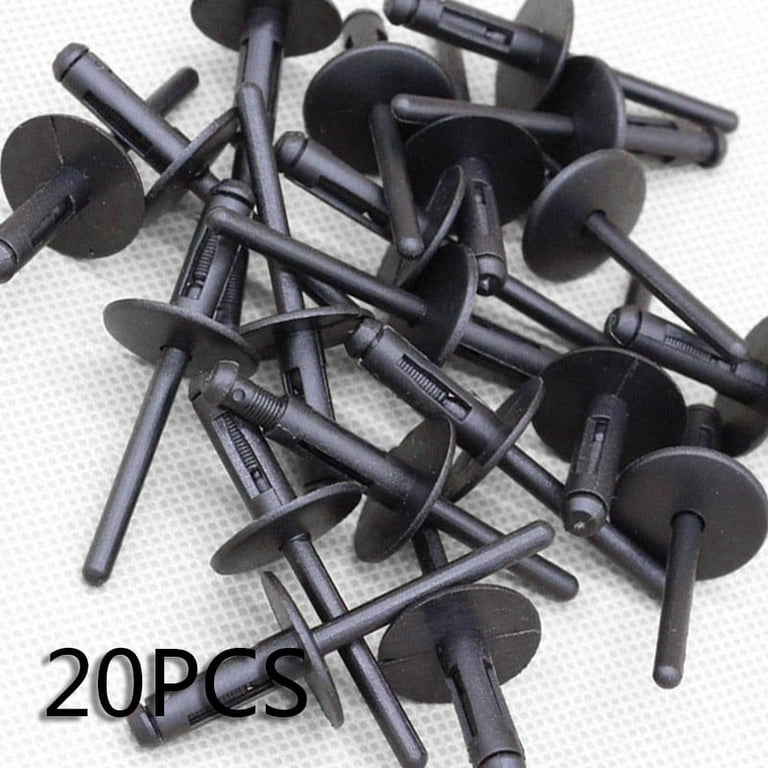The Importance of Car Fender Liner Rivets
When it comes to maintaining your car, it's important to pay attention to even the smallest parts. One such part that often goes unnoticed is the car fender liner rivet. These small but crucial pieces play a vital role in keeping your car functioning properly and protecting it from potential damage. In this article, we will delve into the world of car fender liner rivets and understand their importance in ensuring the longevity of your vehicle.
What are Car Fender Liner Rivets?

Car fender liner rivets, also known as plastic push-in fasteners or retainers, are small plastic or nylon clips that are used to secure the fender liner or inner wheel well to the frame of the car. They are designed to hold the fender liner in place and prevent it from moving or shifting while the vehicle is in motion. These rivets come in various sizes and shapes depending on the make and model of the car.
How do they Work?
Car fender liner rivets work by inserting them into pre-drilled holes on the fender liner and then pushing them through the corresponding holes on the car's frame. Once they are securely in place, they expand and lock into position, creating a tight fit between the fender liner and the car's body. This ensures that the fender liner stays in place and does not come loose while driving.
Why are they Important?
Car fender liner rivets may seem like a small and insignificant part of your vehicle, but they play an important role in protecting your car's components. Here are three reasons why they are important:
- Secure Fender Liner: As mentioned earlier, car fender liner rivets keep the fender liner in place, preventing it from moving or shifting while driving. This is important because a loose fender liner can cause damage to other components of the car, such as the wheel well or suspension.
- Protection from Debris: Fender liners act as a barrier between the road and your car's undercarriage components. They protect these sensitive parts from debris such as rocks, dirt, and water that can cause damage and corrosion. Without secure fender liner rivets, the liner can come loose and leave these components vulnerable to potential damage.
- Noise Reduction: Loose fender liners can create an irritating rattling noise while driving. This can be not only annoying but also distracting for the driver. Properly installed car fender liner rivets ensure that the liner stays in place and reduces any unnecessary noise.
How to Replace Car Fender Liner Rivets

Over time, car fender liner rivets can become loose or damaged due to wear and tear. It is important to regularly inspect them and replace any that are broken or missing. Here are the steps to replace car fender liner rivets:
Step 1: Gather Necessary Materials
To replace car fender liner rivets, you will need new rivets (make sure to get the correct size for your particular car), pliers, and a flathead screwdriver.
Step 2: Remove Old Rivet
Using the pliers, grip the head of the old rivet and pull it out. If the rivet is stuck, you can use the flathead screwdriver to pry it out gently.
Step 3: Insert New Rivet
Place the new rivet into the pre-drilled hole on the fender liner and push it through the corresponding hole on the car's frame. Make sure the rivet is securely in place before moving on to the next step.
Step 4: Secure the Rivet
Using the pliers again, squeeze the head of the rivet until it expands and locks into place. This will create a tight fit between the fender liner and the car's frame.
Step 5: Repeat for Remaining Rivets
Repeat these steps for all the car fender liner rivets that need to be replaced. It is recommended to replace all the rivets at once even if only one or two are damaged, as it ensures the proper functioning of the fender liner.
Types of Car Fender Liner Rivets

Car fender liner rivets come in different shapes and sizes depending on the make and model of your vehicle. Here are three common types of car fender liner rivets:
Plastic Push-In Rivets
These are the most commonly used type of car fender liner rivets. They have a head that is usually circular or square in shape and are inserted into pre-drilled holes on the fender liner.
Self-Tapping Rivets
Self-tapping rivets are slightly different from plastic push-in rivets as they are designed to create their own hole when inserted. They are commonly used for attaching fender liners to metal frames.
Screw-In Rivets
Screw-in rivets are similar to self-tapping rivets, but they require a screwdriver or drill to secure them into place. They can provide a tighter, more secure fit compared to other types of rivets.
Frequently Asked Questions (FAQs)

What should I do if my car's fender liner is loose?
If you notice that your car's fender liner is loose, it is important to replace any missing or damaged rivets immediately. This will help prevent any potential damage to other components of your car.
Can I use any size of car fender liner rivets for my vehicle?
No, it is important to use the correct size of car fender liner rivets for your particular vehicle. Using the wrong size can result in a loose fit and potential damage.
How often should I replace my car fender liner rivets?
It is recommended to regularly inspect your car's fender liner rivets and replace any that are damaged or missing. It is also a good idea to replace all the rivets at once, even if only one or two are damaged.
Can I use a different type of rivet for my car's fender liner?
It is recommended to use the type of rivet that is specified for your particular make and model of car. Using a different type of rivet may not provide a secure fit and could potentially damage the fender liner.
Can I install car fender liner rivets myself?
Replacing car fender liner rivets can be a relatively simple task. However, if you are unsure or uncomfortable, it is best to have a professional do it for you to ensure the proper installation and functioning of the rivets.
Conclusion

Car fender liner rivets may seem like a small and insignificant part of your vehicle, but they play a crucial role in protecting it from potential damage. Regularly inspecting and replacing these rivets will help ensure the longevity of your car's components and provide a smooth and safe driving experience. So, next time you're maintaining your car, don't forget to pay attention to these tiny yet important pieces!



